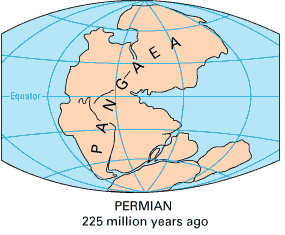Education Links
Leaving Cert
 Maths
Maths
 French
French
 English
English
 Chemistry
Chemistry
 Physics
Physics
 Biology
Biology
 Economics
Economics
 Spanish
Spanish
 Geography
Geography
 History
History
Junior Cert
Much of our understanding of earthquakes is based upon a revolutionary theory of earth dynamics, called PLATE TECTONICS.
Our understanding of earthquakes has grown immensely over the past decades although prediction is still uncertain. Much of our understanding is based upon a revolutionary theory of earth dynamics, called PLATE TECTONICS. This comprehensive theory offers an explanation for both volcanoes and earthquakes.
1. Continental Drift
Have you ever noticed how the continents of the world seem to fit together? Notice how South America can be rotated and made to fit the west coast of Africa. Is this just chance or is it possible that the continents were once joined together to form one 'supercontinent'. In the early part of the century a German geophysicist Alfred Wegener used map, geological and vegetation evidence to propose a theory that there had once been a supercontinent - he called it Pangaea - that broke apart and the pieces 'drifted' into their present position. His theory of Continental Drift was dismissed as wishful thinking as no one could suggest a method by which continents could move through the rocks on the sea-floor.


